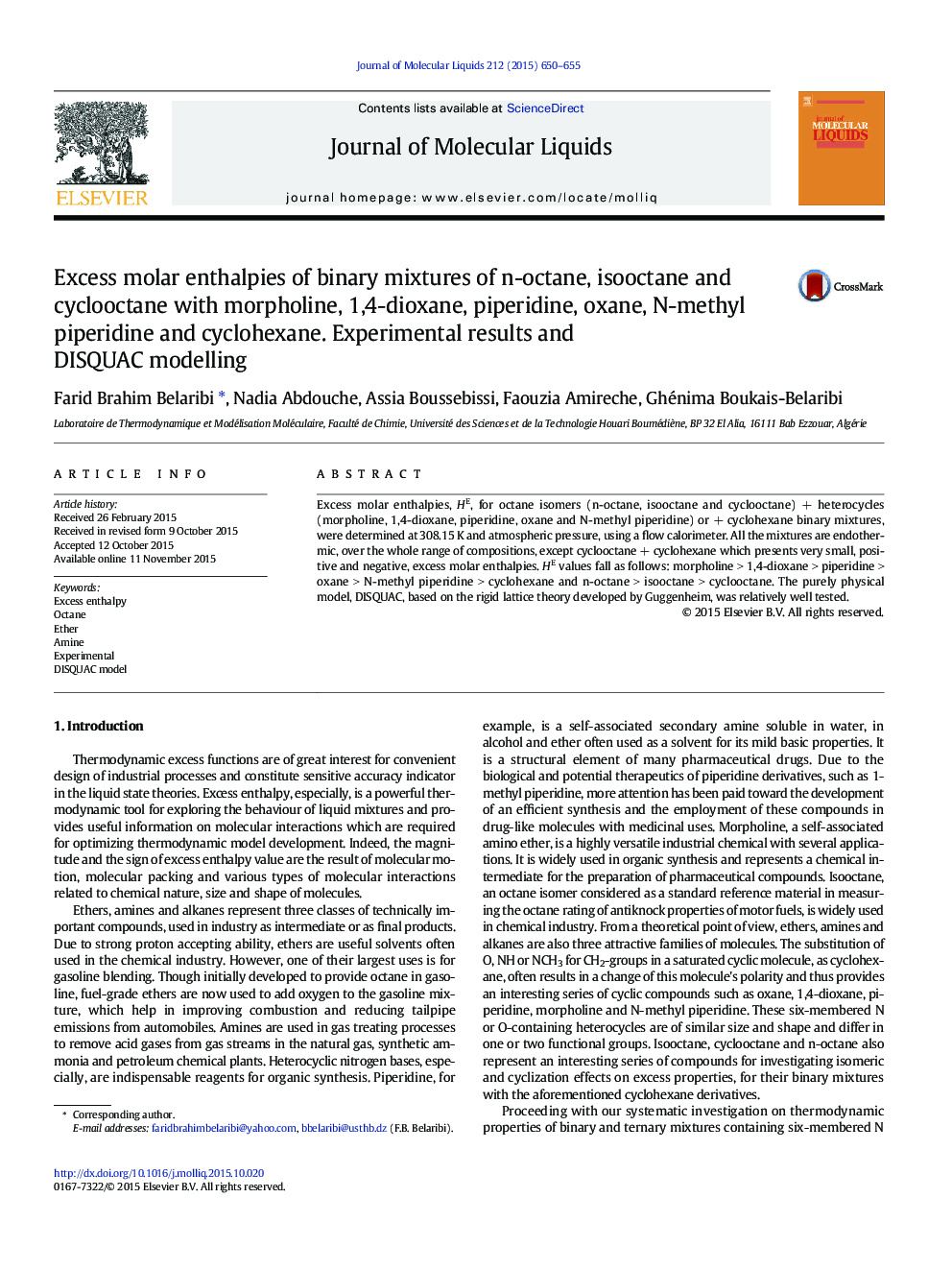| Article ID | Journal | Published Year | Pages | File Type |
|---|---|---|---|---|
| 5410573 | Journal of Molecular Liquids | 2015 | 6 Pages |
â¢Experimental HE data for octane isomers + heterocycle binary systems at 35 °C; HE > 0â¢HE of mixtures, for a given heterocycle or C8 isomer, changes respectively as follows.â¢Morpholine > 1,4-dioxane > piperidine > oxane > methylpiperidine > cyclohexaneâ¢n-C8 > iso-C8 > cyclo-C8â¢DISQUAC predicts HE for n-C8 containing mixtures but it failed for other systems.
ABSTRACTExcess molar enthalpies, HE, for octane isomers (n-octane, isooctane and cyclooctane) + heterocycles (morpholine, 1,4-dioxane, piperidine, oxane and N-methyl piperidine) or + cyclohexane binary mixtures, were determined at 308.15 K and atmospheric pressure, using a flow calorimeter. All the mixtures are endothermic, over the whole range of compositions, except cyclooctane + cyclohexane which presents very small, positive and negative, excess molar enthalpies. HE values fall as follows: morpholine > 1,4-dioxane > piperidine > oxane > N-methyl piperidine > cyclohexane and n-octane > isooctane > cyclooctane. The purely physical model, DISQUAC, based on the rigid lattice theory developed by Guggenheim, was relatively well tested.
